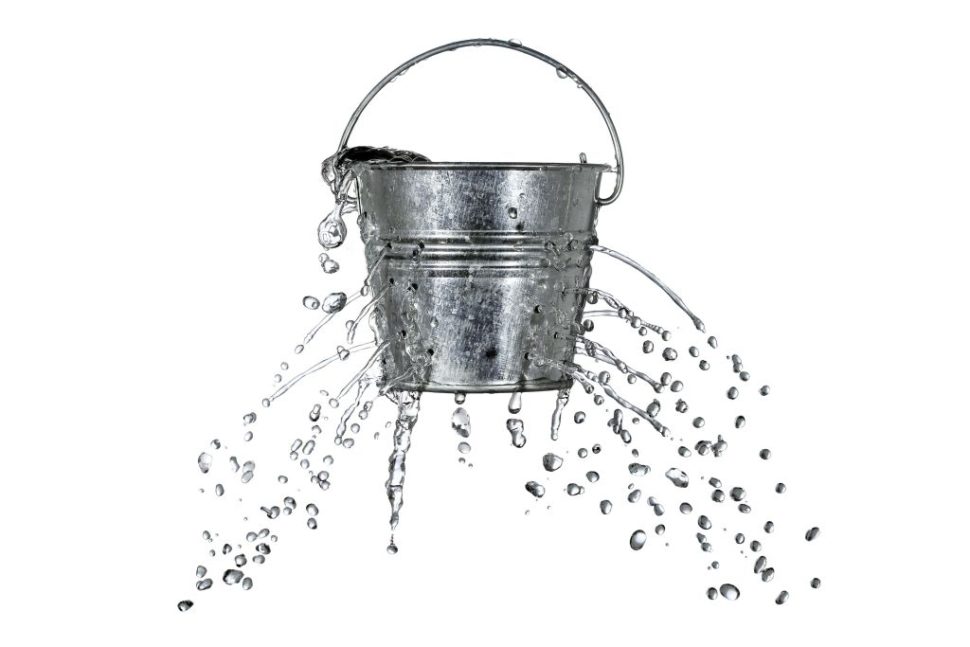Every nonprofit organization needs more of two things: time and money. Okay, every organization (nonprofit or for-profit) could use more of those two resources. Hey, now that I think about, I could use more of those two myself…
Time and money are the most valuable resources in the world, and for nonprofits the impact of having more of either can be immeasurable. Of course, time is finite — we all are limited to just 24 hours in a day, but money (funding) is theoretically uncapped, and having more of it generally equates to having a larger impact on the world. That’s not to say that uncovering efficiencies, prioritizing activities, and increasing productivity are all for naught (they aren’t), it simply means that “saving time” plays a direct role in increasing funding. If I’m more efficient, I can raise more money.
Fundraising professionals power the financial engine that sustains millions of nonprofits across the globe, but they all face one common question: how do we raise more money? Of course such a broad question can’t be addressed in a blog post, nor should it be. Increasing the “growth in giving” is an issue worthy of industry boards and committees, not blog posts or ad hoc analysis.
Yet, as with most things, there is one simple answer to this question that can have a resounding impact and actually make a substantial difference on your funds raised. Yes, the answer to the “how do we raise more money?” question is incredibly complex, but no that doesn’t mean there isn’t anything you can do today to affect it.
Let’s start with a universal truth; there are only three ways to raise more money. Now, before you scroll to the comment section of this page and begin typing your, “there are more than three ways to raise money, bozo!” comment, please bear with me.
Any organization, nonprofit or for-profit has only three ways to increase the amount money they receive. They could:
- Acquire new donors/customers
- Retain existing donors/customers
- Monetize their donors/customers
It’s really that simple.
I’ve appended “/customers” to each of the three strategies above for a reason. As you continue reading this blog post we’ll address each strategy with both a nonprofit example and a for-profit example. You’ll quickly realize that for-profit companies are employing each of these three strategies on you every day.
Let’s walk through each one.
Acquire new donors/customers

Everyone, and I mean everyone is familiar with acquisition as a strategy to increase funds raised. Actually, when you first started reading this blog post, you may have thought that acquisition was the only way to raise more money.
Nonprofits are really good at acquiring new donors. So are for-profits when it comes to acquiring new customers. You don’t have to look far for examples of either vying for your attention and pocketbook.
You’ve most likely received mail from a nonprofit that you’ve never donated to before. It’s also likely that the mailer you received is from an organization with a similar mission to a different nonprofit that you have donated to before. This is donor acquisition 101, nothing earth shattering here.
You’ve also likely received mail from for-profit companies that you’ve never interacted with before. All those credit-card offers you get in the mail? Yep, it’s the same concept those nonprofit organizations employ — identify people that fit a certain criteria, send them mail, ca-ching.
In either scenario the goal is to bring in enough new donors/customers and have their revenues cover the cost of acquisition. On your quest to raise more money though, acquisition is actually your worst option. Unfortunately, now more than ever we are addicted to acquisition based growth. It’s nice to talk about how many new donors you acquired and it’s fun to win people over and get them to contribute to your cause, but it really isn’t your best bet.
It may seem on the surface that in order to raise more money we need to increase our network of potential donors/customers, but fundraising through acquisition is actually incredibly expensive and inefficient. It takes up copious amounts of those two vital resources, time and money: Time to identify, qualify and cultivate the newcomers, and money to provide them with the materials and services they need to make a giving decision. Nine times out of ten, there’s a better answer.
Retain existing donors/customers

More recently, the concept of increasing funding through donor retention has become “sexy”. Where acquisition is expensive and costly, retention is cheaper and more lucrative. There are a lot of expenses in acquiring a new donor (more on that here), and considerably fewer expenses to retain a donor (more on that here).
Many nonprofits strive to move one-time donors into monthly “sustainer” programs, or, at a minimum, get them to renew their contributions year over year. The newsletter you receive once a month? That’s a reminder to donate and engage with the organization. Nonprofits far and wide have begun buying into the concepts of retention based fundraising. Acquire a donor, build a relationship, raise more money. In the world of major gifts, this couldn’t be more true.
Part of the ongoing transition away from acquisition-based fundraising may be the alarmingly low rates of first time donor renewals that plague our industry. Take for example industry benchmarks on first-time donor retention rate (the rate at which first-time donors from last year give again this year). Those values hover around 30% which doesn’t bode well for sustainable growth.
For-profits are not to be outdone in this arena and have acknowledged the benefits of retaining customers. Go grab your car keys, I’ll wait a moment until you get back…

Now look at your key chain, how many “rewards cards,” or “key tags” do you have? Okay, maybe I’m dating myself a bit (everything seems to be digital nowadays), but do you remember when you had a “rewards card” for every grocery store (and blockbuster) on your keychain? That “key tag” was the grocery store’s mechanism to build a relationship with you and retain your business. Generating more money through retention 101.
It’s the same concept no matter where you go. Business and nonprofits alike can both raise more money when they build lasting relationships with their donors and customers. Raising more money from retention is simple, keep a donor close and they’ll give more at less cost to the organization. It’s a good thing our sector is moving in this direction, but remember there is a third way to raise more money.
Monetize donors/customers

The third strategy to raise more money is the least widely known one in the nonprofit space: Monetizing a donor relationship. To be fair though, many for-profits struggle with this concept as well. It’s not unique to just our sector.
Monetizing a donor relationship is a fancy way of saying, “We’ve retained a donor, now how do we get them to increase their amount of giving?” How can we increase the revenues associated with our donors? How can we “upgrade” them?
Monetization ties in with donor lifetime value, a fundraising metric you may have seen floating around the internet. Lifetime value is a projection of future revenues attributed to your relationship with a donor. I’ve written extensively on LTV here and here, please take a look.
Examples of monetization are hard to come by. Qualifying an activity as part of a “monetization” or “upgrade” strategy is difficult. If Uber announced a plan to invest $100 million in improved customer support the reaction would be, “Wow, Uber is finally waking up and realizing they need to help support their user’s experience more.” That sentiment would be true, but that investment in customer support is also an example of Uber’s monetization strategy. Although the implications of investing $100 million on customer support may initially appear as red ink on the balance sheet, its impacts on overall customer lifetime value will positively affect revenues in the long-run.
Monetization strategy is not cut and dry and it’s not all that easy to follow.
On the other end of the spectrum though, there are more obvious monetization investments being made. For example, many nonprofits employ “donor upgrade campaigns.” Take for example this fantastic case study from Judicial Watch. Or, consider some of the best practices Greg preaches here on the MarketSmart blog. Monetization strategy doesn’t always have to be so discrete.
Applying this at your shop
So, how do we raise more money? We have three strategies to choose from:
- Acquisition
- Retention
- Monetization
Acquisition is the easiest to understand: We spent this much money and acquired this much in donations.
Retention is next in order of simplicity: We spent this much money to acquire those donors and they’ve retained their giving for four years now.
And monetization is the hardest: We invested in thank you callers for all new donors and have realized an increase in average second donation amount of 26%.
If you’re trying to answer this age-old question at your organization it’s my hope that this blog post got your gears spinning. Although acquisition strategies may feel the most compelling right now, it’s important to rationalize that they’re probably not. Retention is a worthy area to look into for increases in revenues, but the best place to start is most likely by investing in harder to qualify and quantify activities that align with your monetization strategy. Yes, these will be more difficult to sell to your board, but if executed correctly, they’re well worth it.
To raise more money, we need to think long-term. Acquisition is good. Retention is better. Monetization is best.
Related Posts:
>>Fundraising metrics: you have to see them to believe them
>>3 simple ways fundraisers can improve their LinkedIn profiles to land more meetings and raise more money

Well I agree to a point. As students in our foundations of fundraising course observe, attending only to moving people up the donor pyramid ignores a need to continue to build a pipeline. As I say to them, it’s a fine balance of attending to various streams, e.g., acquisition, retention, and what is being called monetization.
FYI monetization is a term that I suspect might drive a donor out the door if they heard a nonprofit use it in reference to them. Just as donors are not ATMS, they are not investment instruments or a product to be further capitalized on. Donors are our supporters, partners, and some would say investors (but I have difficulty even with that term). Yes we hope some donors will give at higher levels, but through a process of relationship building that helps identify their passions, matches those passions with needs of our nonprofits, and leads to joy on all sides when a gift is made.
I couldn’t agree more with both of your points, Sophie. Monetization is a terrible term, but the best I could come up with, and yes, all organizations need to strive to find a balance between acquisition, retention and “monetization.” Thanks for taking the time to read and comment.